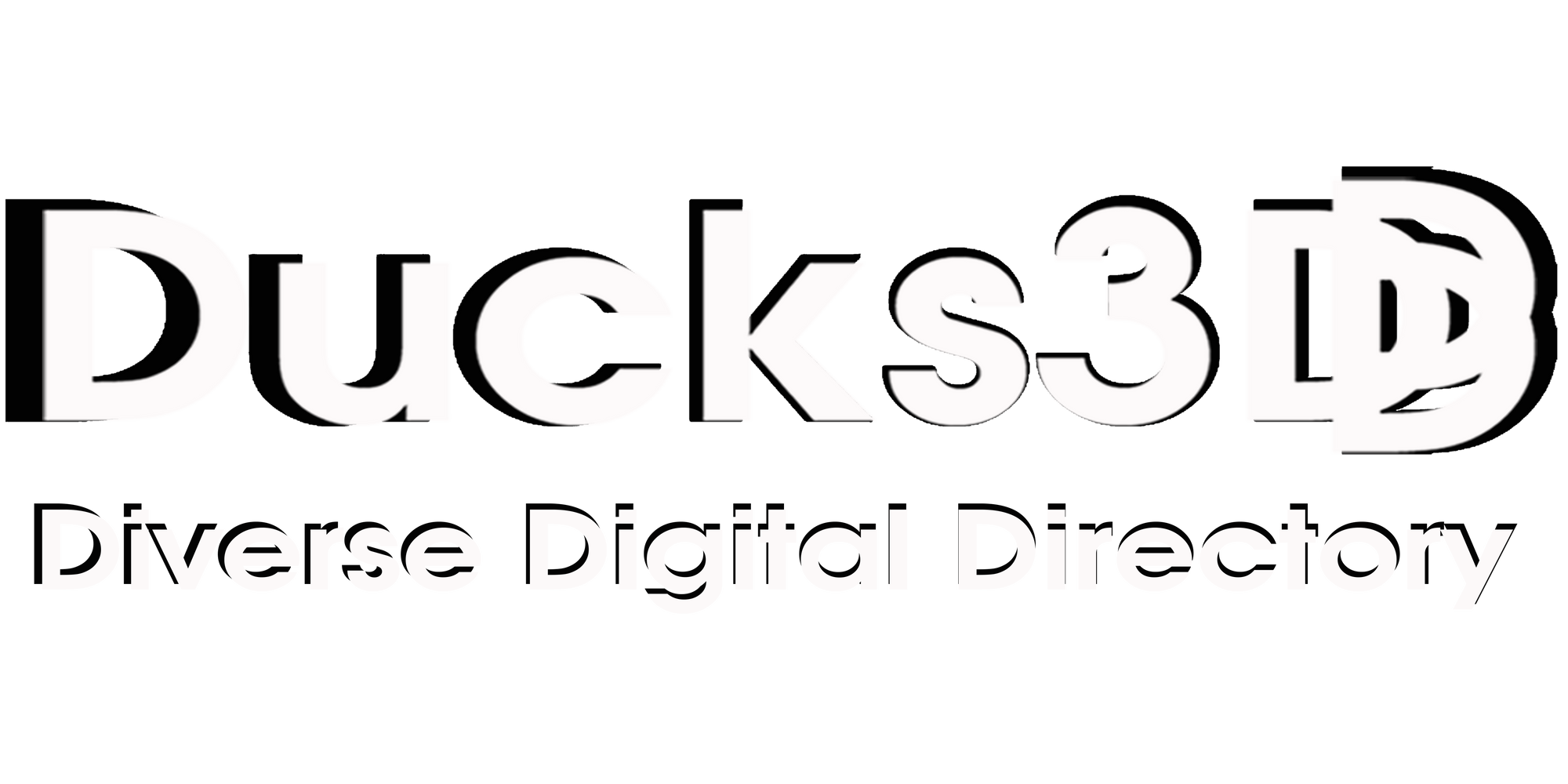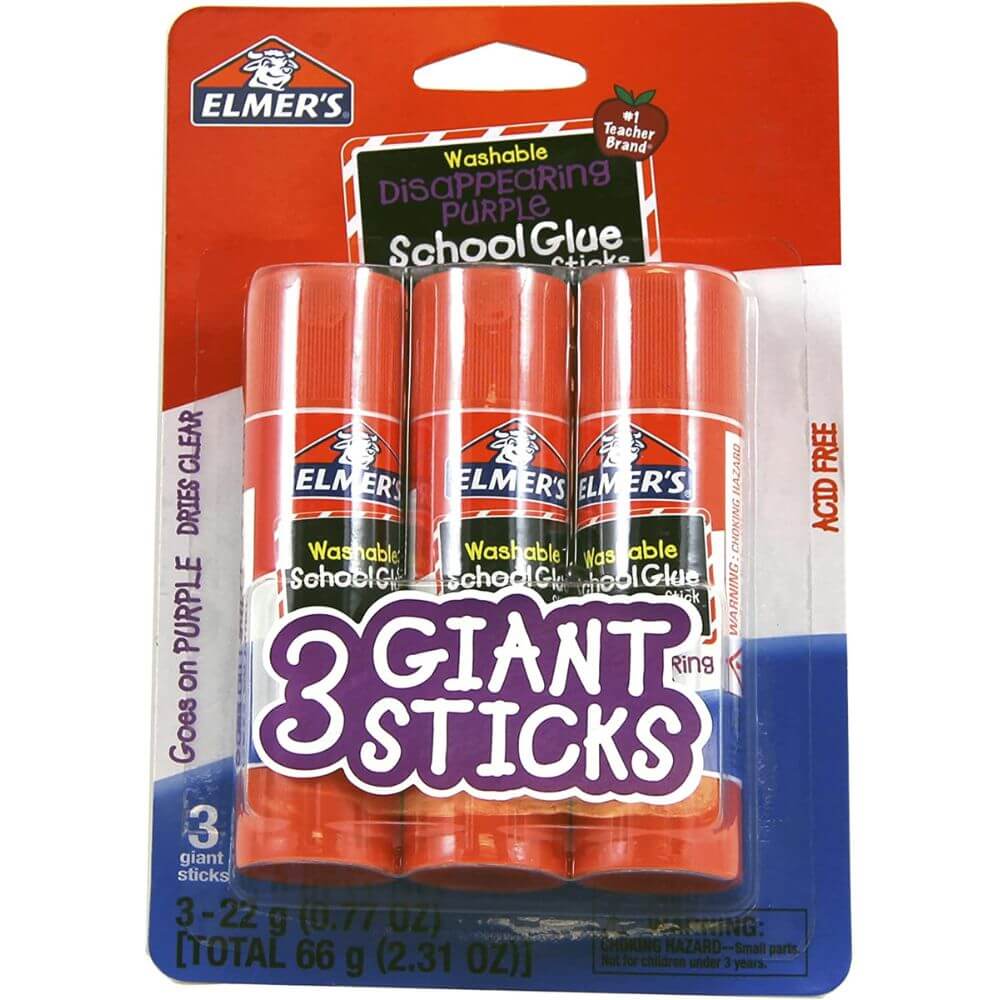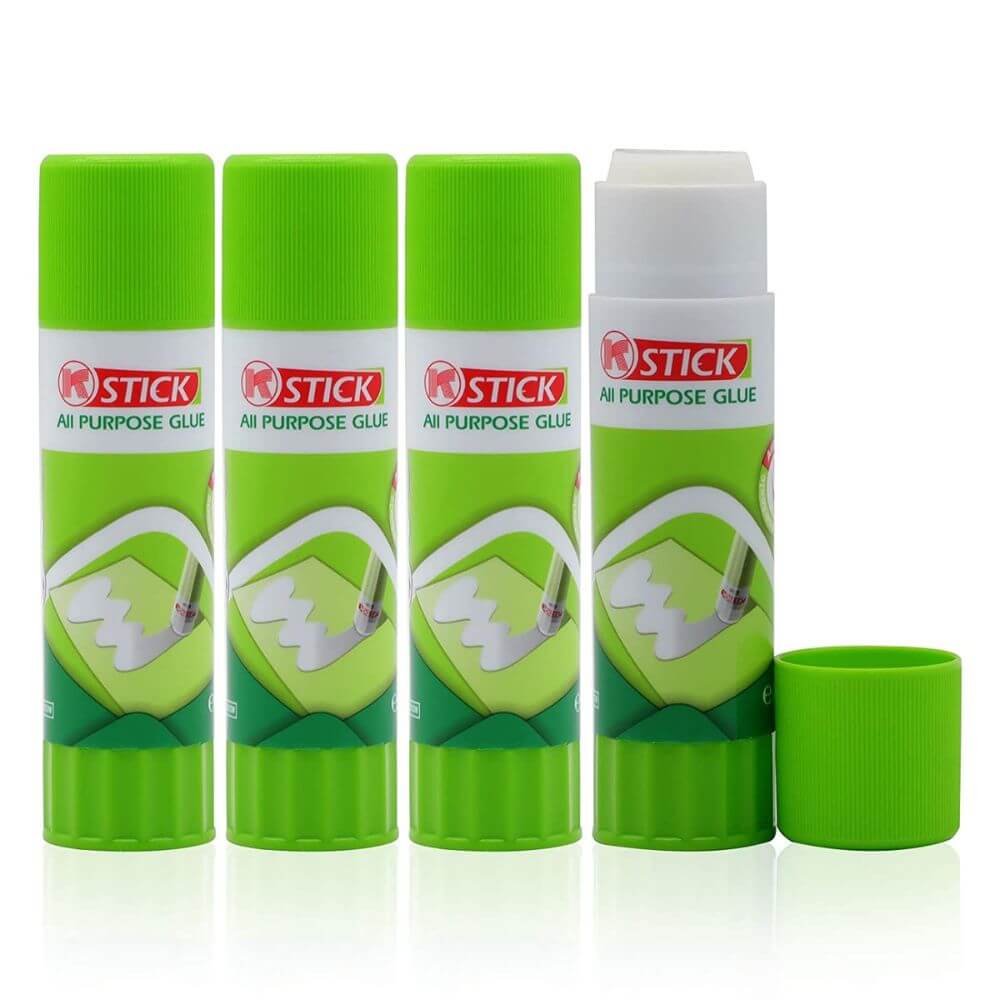How to Choose the Best Glue Stick for 3D Printing
3D printing projects require a sturdy foundation to start from and a glue stick is often the solution.
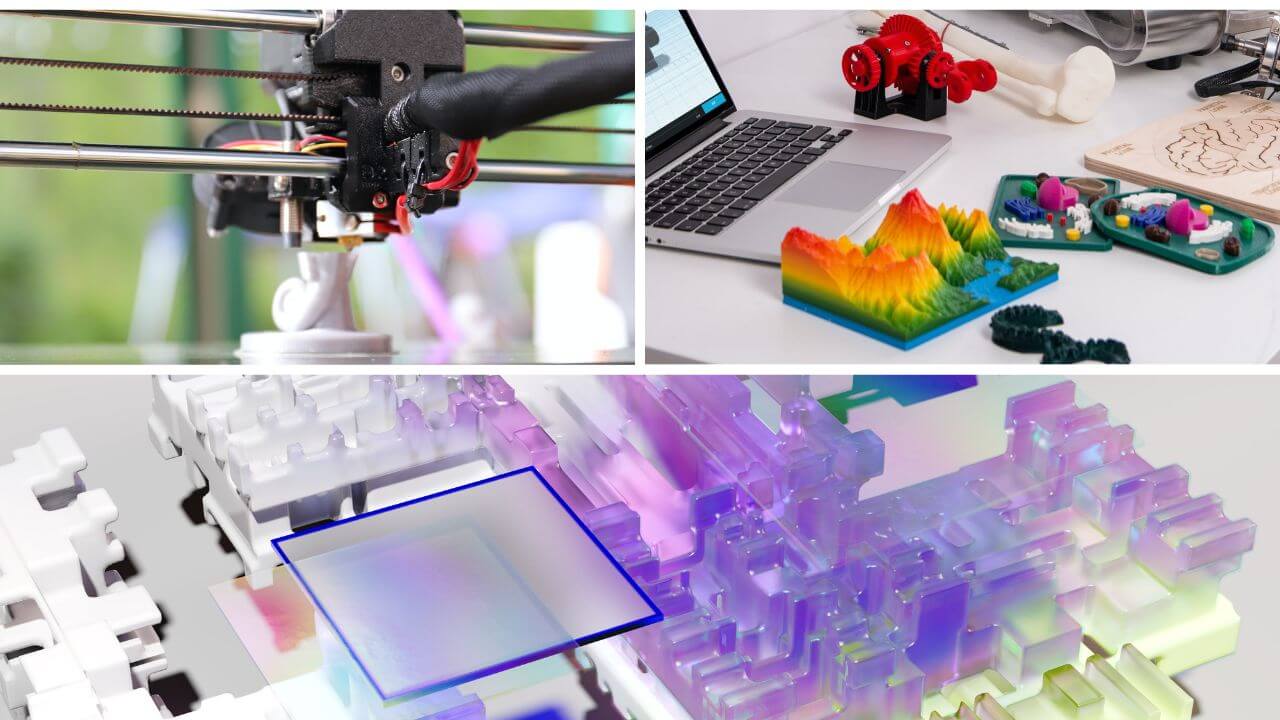
3D printing projects require a sturdy foundation to start from and a glue stick is often the solution.
By anchoring your project’s first layer of plastic directly to the glass build plate properly with a strong adhesion, you ensure that your 3D prints come out perfectly during the printing process.
Not only that, but gluing down your first layer also helps to prevent warping and curling of your almost finished printing product. But just like any other tool in the 3D printing arsenal, there are certain types of glue sticks better suited for certain applications.
In this blog post, we’ll explore how different types of glue sticks can be used effectively with 3D printing and provide some helpful tips on choosing the best glue stick for each application.
When it comes to 3D printing, having the right supplies on hand is essential for a successful project.
Glue sticks are an integral part of the process, used to secure the first thin layer of plastic to the build plate with a strong adhesive. Choosing the best glue stick for your 3D printing application can be crucial in achieving quality results.
Depending on the type of 3D printing material you are using, some glue sticks will be better suited than others. Generally speaking, there are two main types of glue sticks: water-based and solvent-based.
A Water based glue stick tends to be more flexible and is great for adhering plastic materials such as ABS or PLA to your build plate. On the other hand, a solvent based glue stick is usually more rigid and better suited for adhering metal or ceramic materials to the build plate.
When deciding which type of glue stick is best for your project, it is important to consider the material you are using as well as the adhesion strength that you need. If you are printing with ABS or PLA, for example, then a water-based glue stick would be the best choice for adhesive materials.
For more heavy duty materials such as metal and ceramic, a solvent-based glue stick should offer enough adhesion to securely adhere and hold the material in place during the printing process.
In addition, it is important to remember that a glue stick should only be used on a clean build plate in order to achieve optimal results.
How we made our choices:
When it comes to choosing the best glue stick for 3D printing, we took a few factors into consideration. We looked at the type of material being used in the project and whether water-based or solvent-based glue sticks would be more suitable for that particular application. We also considered how much adhesion strength was needed to ensure that our prints were securely attached to the the build surface or plate during printing. Finally, we made sure that our build platform was clean before applying any amount of the purple glue stick, as this helps to achieve optimal results with any type of adhesive.
Our first choice with overwhelming acceptance among the 3D printing community was:
Elmer's Disappearing Purple School Glue Stick
Looking for a versatile, non-toxic glue stick that's great for 3D print bed adhesion as well as the classroom and arts and crafts? Look no further than Elmer's Disappearing Glue Stick!
The disappearing purple formula helps you see where the disappearing purple glue stick really is, while it dries clear and applies smoothly for a mess-free appearance. Plus, the safe, acid-free, and non-toxic formula is ideal for classrooms. And with a giant size, this glue stick is ideal for 3D printing as well as providing hours of artwork and school projects.
3D Printer Adhesive Glue Bed Weld Original
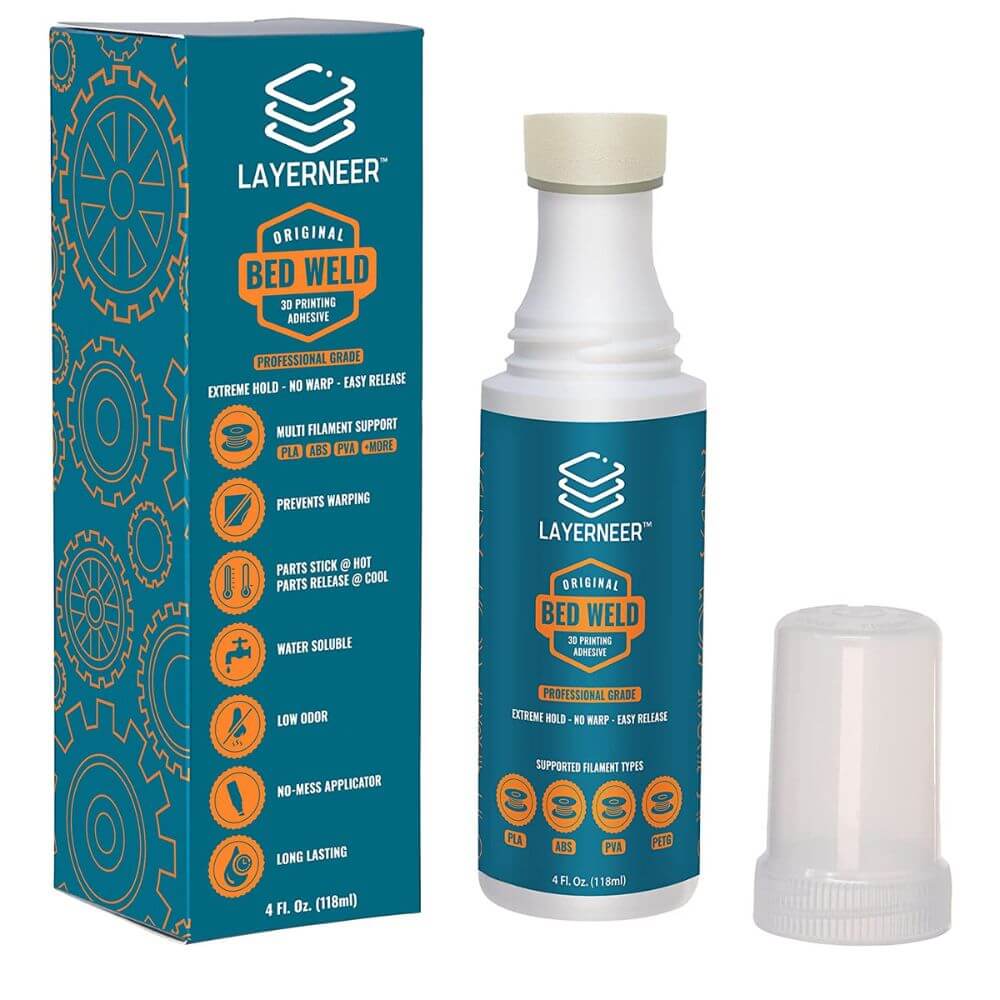
Several Prints On A Single Coating
3D Printer Adhesive Glue Bed Weld Original
Looking to improve the adhesion of your 3D prints?
Look no further than 3D Printer Adhesive Glue Bed Weld Original!
Their thermal dynamic coating is based on science and works like magic, providing a powerful adhesive bond that will keep your parts sticking at hot temperatures and releasing when cooled. This means you can print several times on a single coating - and it's easy to recharge with just a wipe of a wet sponge if you need more prints.
Plus, their low odor and water soluble formula is gentle on your nose and won't give you a headache. And don't worry about making a mess - their no-mess applicator has a built in foam tip that makes applying the coating simple.
Plus, if this solution doesn't work for your 3D printing application, they offer a FULL 3 MONTHS money-back guarantee. So what are you waiting for? Try 3D Printer Adhesive Glue Bed Weld Original today!
3D Printer Glue Sticks
Looking for a 3D printer glue that is perfect for all types of printing surfaces? Look no further than 3D Printer Glue Sticks! Their adhesive is easy to use and easy to clean, making it the perfect choice for all your 3D printing needs. Plus, their PLA glue is long lasting, meaning you can get 100+ average prints from each stick. Whether you are new to 3D printing or are a seasoned pro, 3D Printer Glue Sticks has the perfect adhesive for you!
Magigoo MO2016 All-in-One 3D Printer Adhesive Glue
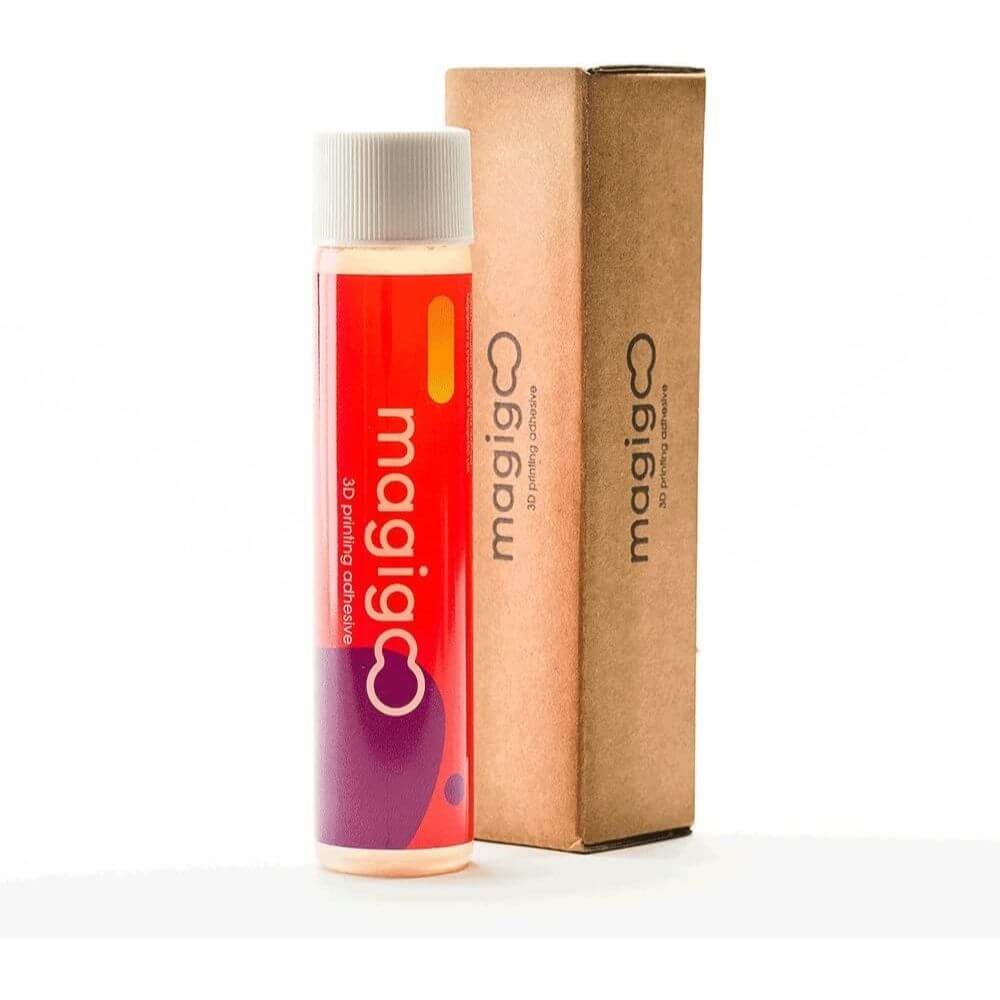
Safe To Use And Odorless
Magigoo MO2018 All-in-One Large Format 3D Printer Adhesive Glue
Magigoo MO2016, the all-in-one 3D printer adhesive glue. With its weld-like properties, Magigoo stops prints from warping and keeps them stuck to the surface of the build plate - making for longer lasting, higher quality prints.
Applied easily with just a shake and a press, Magigoo is safe to use and odorless so you can print in any environment. Plus, it's long lasting, meaning each application can be used multiple times. Get started with your 3D printing projects today with Magigoo MO2016 adhesive glue!
3D Printer Glue Sticks – Extra Wide
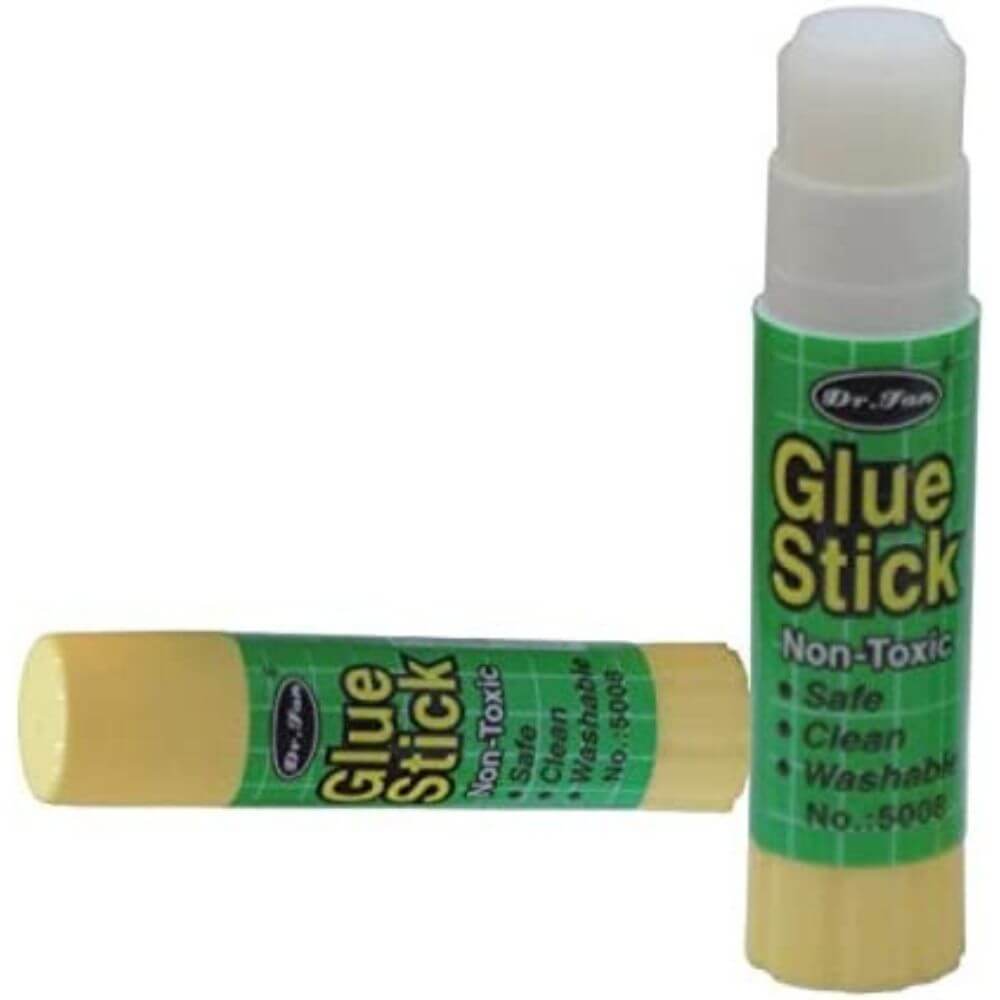
Adhesive Area Is A Full 1" Wide
3D Printer Glue Sticks – Extra Wide
Looking for a high quality adhesive for the glass bed of your 3D printing projects? Look no further than the 3D Printer Glue Sticks from AMX3D! This jumbo-sized glue stick provides a great first layer adhesion, and turns clear as the glue dries. The extra thick stick has an adhesive area that is a full 1" wide, making for an easy application and ideal choice for coating your print bed surface, fast and easy.
The washable, non toxic glue stick is ASTM certified, and safe for kids. Plus, they have no strong smell - just a faint, pleasant aroma. So start your next 3D printing project with the best tools - AMX3D's 3D Printer Glue Sticks!
FAQs
Can you use any glue stick for 3D printing?
It's an interesting question; can you use a glue stick for 3D printing? As it turns out, the answer is yes - and no! Let's dive in and explore why.
First off, not all glue sticks are created equal when it comes to 3D printing. Some of the best glue sticks for 3D printing have specific properties that make them ideal for adhering your print bed to your object as it is being printed. Selecting a good quality glue stick can help ensure that your prints don't fail due to premature peeling from the print bed.
In addition to using a suitable adhesive, you may also find it helpful to cover your print bed with blue tape before applying an adhesive layer over top of that. This extra layer helps reduce friction between the printed model and its support surface - which again prevents failure due to shifting during the printing process.
Lastly (and perhaps most importantly) there’s no substitute for effort when trying any new project - especially one as complex as 3D printing! Ensuring that each step of the process is properly planned and vigilantly monitored will help ensure that you get optimal results every time you fire up your printer. The same principle applies here: if you take care in selecting an appropriate glue stick and follow proper application techniques then success will almost certainly be within reach.
Can I use E6000 on PLA?
Ah, the age-old question: can I use E6000 on PLA? The short answer is yes - but there's a bit more to it.
First, let's start with some background info about 3D printing in general - and then we'll get into how you can properly use E6000 with PLA prints.
3D printing basically involves taking a material like plastic (such as PLA), melting it down, and then building up an object layer by layer until the desired shape is formed – all thanks to the wonderful power of technology! To do this effectively, there needs to be enough stickiness between layers so they don't come apart when cooling down too quickly after being printed. This stickiness is provided by the heating elements such as the printer heads and the build plate aka print bed, depending on your 3D printer type. The build plate provides the base stability for your model while the print head produces the layers that create your print.
Now that we know what role the printer head aka hot end and the build plate or print bed plays in creating successful prints out of materials like PLA – let’s talk about using E6000 for 3D printing purposes. Unfortunately not all adhesives work great for sticking thin layers together when doing 3D printing, laser cutting or engraving projects; however, E6000 has proven itself as one of the best choices for doing just that! I personally use the purple glue sticks for the stabilization of the print to the base plate and E6000 for the assembly portion of the models. both types of glue have been known to work great for multiple prints without fail due to their powerful bond strength. Plus they can easily be wiped clean with soap and water if needed.
So ultimately – yes you can use E6000 on PLA! Just make sure you're working with either a robust build platform or print bed so your final product isn't prone to any unexpected failure due to weakened layers caused by improper sticking forces during cooling cycles. Happy Printing!
How do you keep PLA from warping off bed?
If you've been having trouble getting your PLA prints to stick to the bed and not warp off, here are some tips for dealing with warping issues.
First up is bed adhesion. Many people recommend using scotch purple glue sticks to help keep their PLA from coming loose from the print bed due to temperature changes during printing. By spreading a thin coating of glue on the build plate and letting it dry before printing, this layer creates better adhesion between your PLA filament and heated plate as it melts into shape – reducing potential warping when it cools down post-printing.
Another method for keeping your PLA in place is by reducing the surface contact area on the build plate and through the use of a specialized adhesive such as uhu stick (or other "sticky" solutions that can be found online). This too allows for an improved bond between hot plastic and cold metal – reducing likelihood of failure due to shifting during cooling cycles or throughout movement in parts of the model while being built.
Finally, keep in mind that certain settings may affect how well your print beds adhere to any given filament material: nozzles size relative to model size; bed leveling (this is a major factor); heat output (i.e., temperature) within extruder; speed settings; etc.. All these factors need consideration so that they're suited correctly towards making sure your finished piece stays put!
Happy Printing & remember: A sticky situation isn't necessarily a bad one - especially when planning ahead helps prevent costly print failures!
In Conclusion:
No matter which type of glue stick you choose, it’s important to read the label carefully and always follow the manufacturer's instructions for proper application.
By taking these simple steps, you can ensure that your 3D printing projects come out perfectly every time.
With the right glue stick and a bit of practice, you'll be able to create amazing 3D prints that are sure to impress!
If you have any additional questions about best practices for using glue sticks with 3D printing or need more advice on other topics related to this technology, check out our other blog articles here at Ducks3D.
